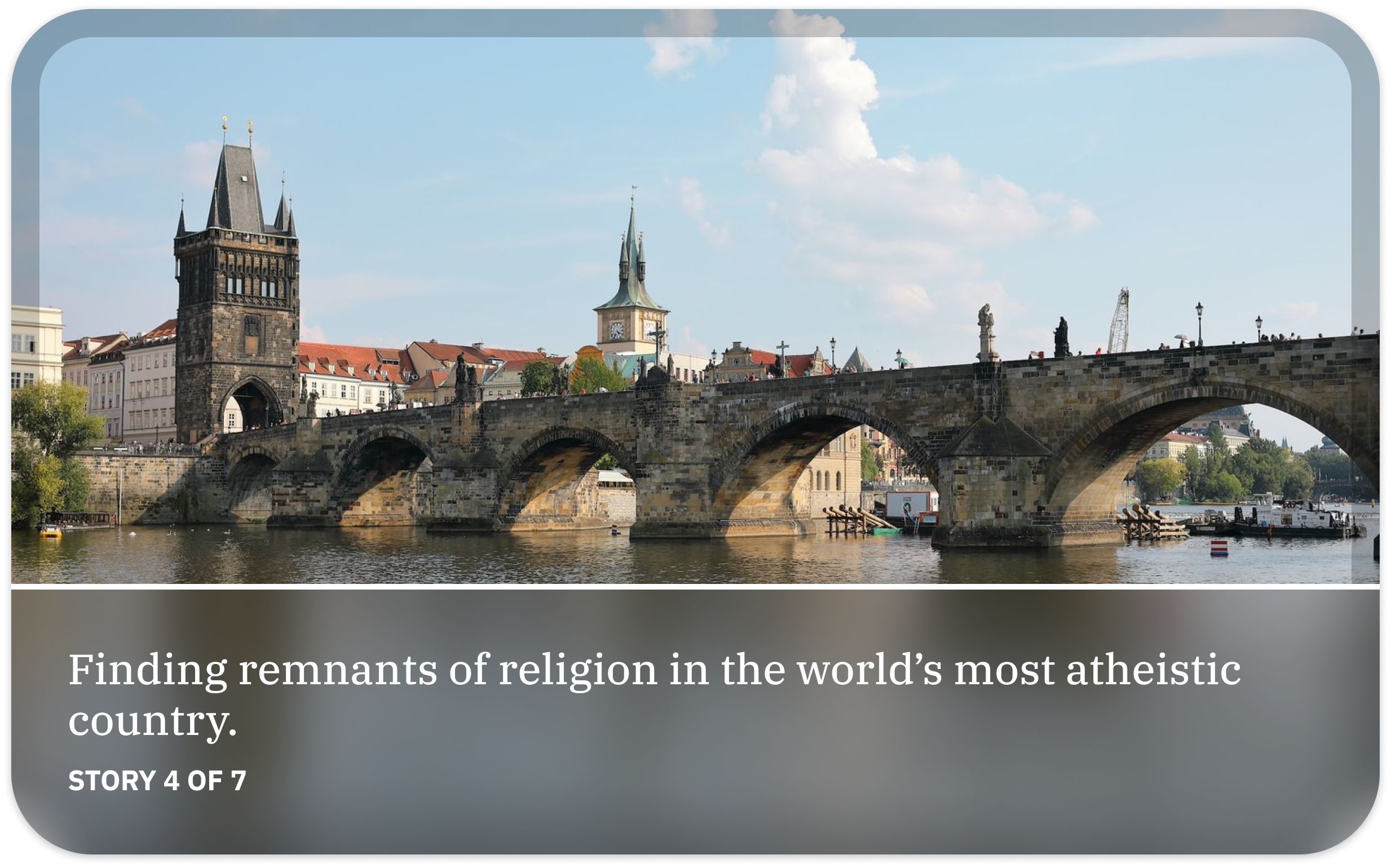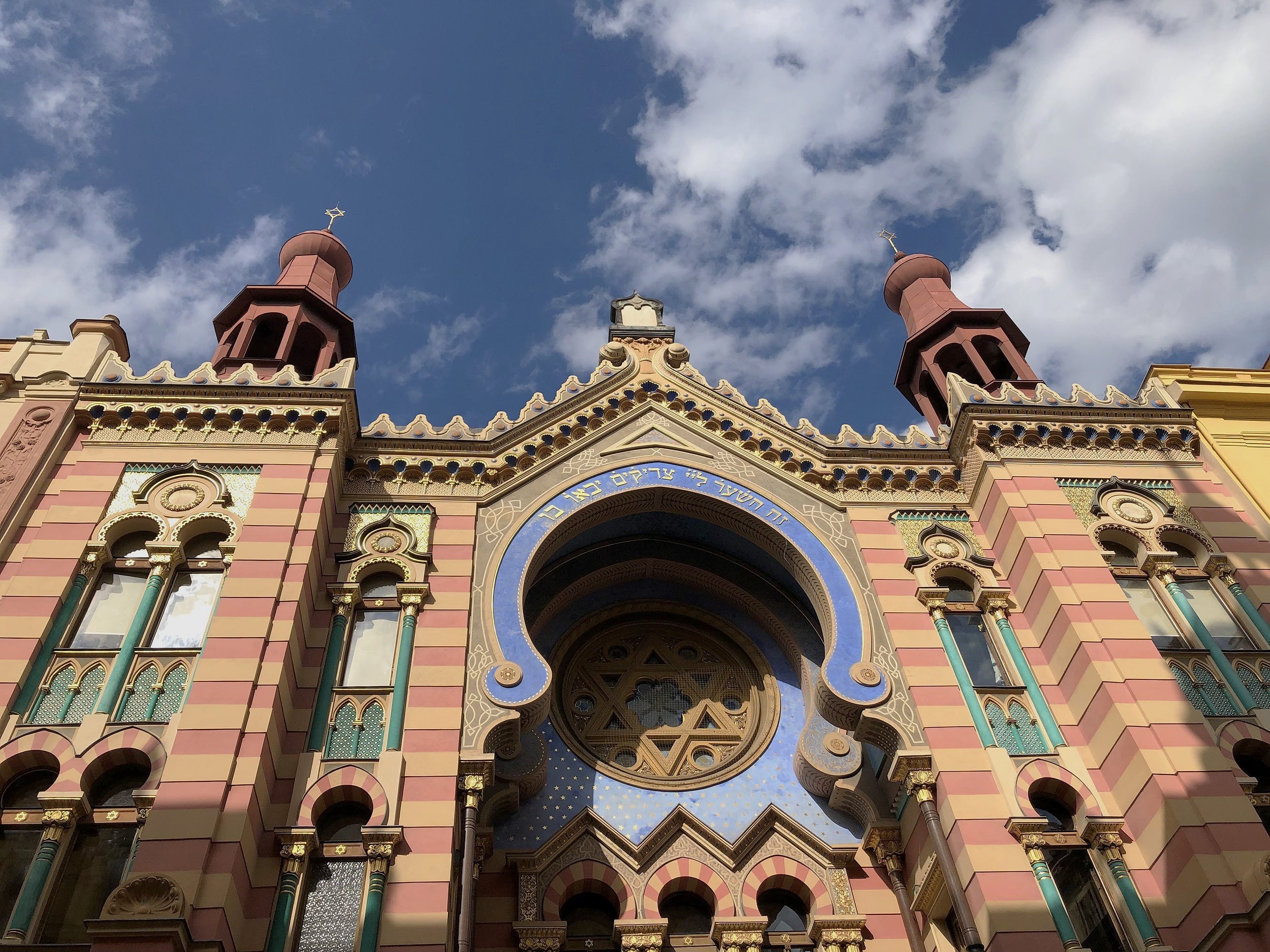Faint Signs Of Faith Part 4: Maintaining An Age-old Jewish Community In The Czech Republic
PRAGUE— It is July, and the dry summer heat is beating down on the quintessential cobbled streets of Old Prague, specifically its Jewish quarter. Once a walled-off ghetto where the bulk of Bohemia’s Jewish community resided apart from the Christian majority — partly for their own protection — it is now little more than an open-air museum.
“Czechs, we are so tolerant. That is why people of all religions have lived here,” the tour guide announces as we approach the colorful facade of the district’s Mudéjar-style Jeruzalémská synagoga. Indeed, the fact that the synagogue is also named in honor of Emperor Franz Joseph I’s silver jubilee speaks to the once embedded life of Prague’s Jews in the city’s political life.
Jubilee Synagogue in Prague is also known as “Jerusalem Synagogue” since it is located on Jerusalem Street. Built in 1906, the synagogue is still active in a city with a rich and tragic Jewish history.
Photo Credit: Paul Glader
Unlike others in the area, this synagogue remains an active place of worship, but it is safe to say that its footfall is dominated more by curious tourists than a thriving congregation.
The tour guide’s monologue hints at this. One thing he fails to mention is why Prague 2022 is a very different world from Prague 1939, when 90,000 Jews made up about 20 percent of the city’s population. The answer is one that most of us do not need repeating: the Holocaust.
Of course, many more Jews remain in Prague — about 10,000 in fact — than in Damascus, Baghdad or Birobidzhan, and there is a reason for this. In 2021, Czechia recorded 381 antisemitic hate incidents, while the U.K. recorded 2,255. Just one of the Czech incidents was violent.
“Jews in Prague feel safe and respected, for sure, but maybe it is only a matter of time before more of us move to Israel or America where there seem to be more opportunities,” explained Ivan Klein, a local whose two daughters both emigrated to Tel Aviv following the coronavirus pandemic. “The Czech winters don't help either,” he quipped.
Indeed, Jews are feeling markedly less “safe and respected” across much of contemporary Europe. In France, the number of recorded antisemitic incidents increased by almost 75 percent in 2021. In Germany, they soared by 29 percent. It is hardly surprising that 1 in 4 European Jews considers emigrating.
One testament to the Prague community’s vitality was its recent effort to establish Ukrainian language classes and social clubs for hundreds of incoming Jews fleeing the ongoing Russian invasion. “A lot of the help for Ukrainians has come from America, but we tried to manage this scheme ourselves,” Klein stressed.
Yet Klein, whose wife Aliyah has clocked up 30 years of service in the city’s remaining Jewish schools, said he believes the fresh Ukrainian exodus is simply another step toward the slow death of Europe’s Jewish civilization.
“It is ‘next year in Jerusalem’ that we sing to wind up the Seder, not ‘next year in Prague,’” he said in a half-sarcastic, half-resigned manner. “The synagogue we are standing in is named after Jerusalem for a reason.” His two companions, fellow congregants who did not speak English, nodded vociferously after he hurriedly translated his remarks.
When we filed out of the synagogue’s intricate interior and once again set to tramping the nearby streets, the tour guide finally dropped the H-word. “A lot of the exhibits are about the Holocaust,” he said as we descended on the city’s Jewish museum. He felt no need to elaborate.
Maisel Synagogue was built in 1592 and founded by Mordecai Maisel, then mayor of the Prague Jewish Town.
Photo Credit Paul Glader.
Inside, bulging throngs of tourists lined the hallways, examining one of the world’s largest Judaica collections. While many of these objects were deliberately preserved after Prague’s turn-of-the-century urban renewal efforts, most were the confiscated belongings of Holocaust victims.
Once appropriated by the Czechoslovak Socialist Republic as a “campaign for peace and against fascism,” the museum now has commercial credentials hard to overlook. A shop catering to the delighted strings of visitors offers scores of volumes on Prague’s many centuries of Jewish presence along with an array of souvenir tote bags, postcards, pencil sharpeners and branded hand sanitizer.
As American author Dara Horn put it so devastatingly in her 2021 book, “people love dead Jews,” or at the very least, collecting key rings at the site of their persecution. The living ones? Not so much.
Georgia Leatherdale-Gilholy studied history at King’s College London and George Washington University. She works as a journalist in the UK, writing for several publications. This piece originally appeared on the Times of Israel.
Editor’s Note: This is the fourth installment in a 7-part series reported by 24 young journalists from 16 countries who studied at the European Journalism Institute in Prague in July of 2022. EJI is co-funded and programmed by The Media Project (the parent non-profit of ReligionUnplugged.com) and The Fund for American Studies. EJI 2022 took place at Anglo-American University.
-
Old Prague’s Jewish quarter was once a walled-off ghetto where the bulk of Bohemia’s Jewish community resided apart from the Christian majority, partly for their own protection. It is now little more than an open-air museum.
-
Muslim tourists and locals in Prague find solace in their accessibility to Middle Eastern, halal food along with tourist hot spots. What’s special about such accessibility is that digital media now promotes “halal tripping” or “halal tourism.”
-
Although the Czech Republic is the most atheist country in the world, people still practice religious traditions today. Simultaneously, there are many factors contributing to the change of religious food culture in the Czech Republic, like globalization, tourism and immigration.
-
Regardless of one's religious affiliation, Prague’s Church of Our Lady Victorious’ breathtaking architecture and rich history make the church an irresistible attraction for travellers. While most can find this to be a unique spiritual experience, the locals of Prague have a rather interesting relationship with the church.



